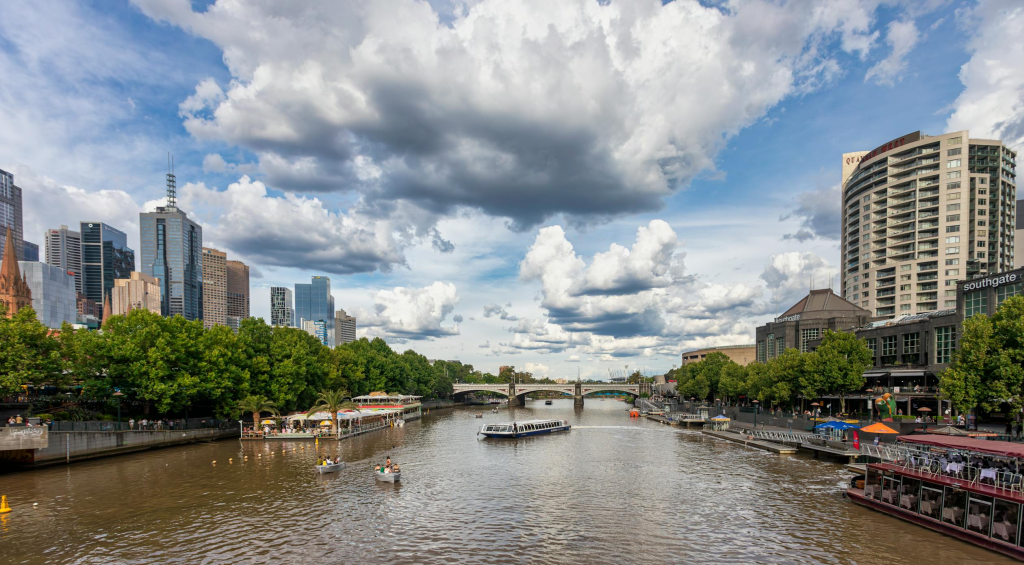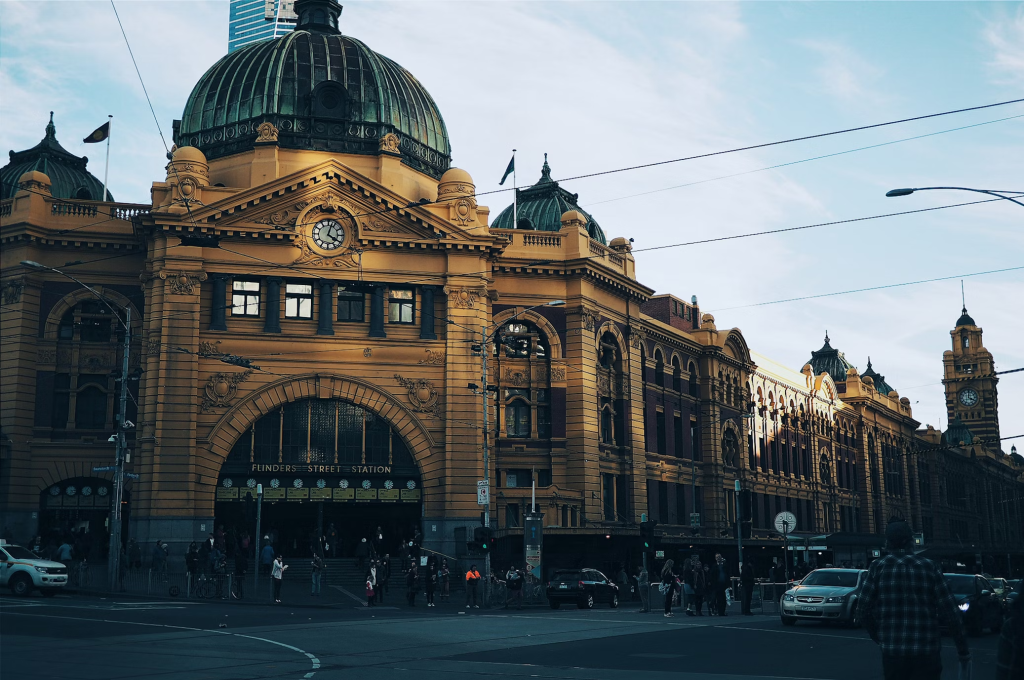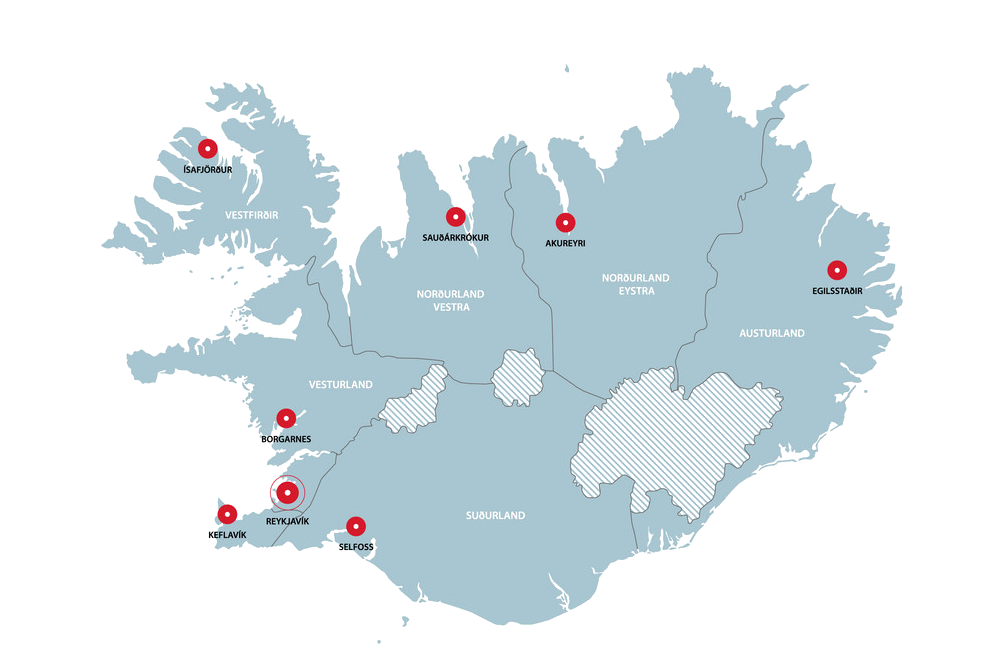
Click edit button to change this text. Lorem ipsum dolor sit amet, consectetur adipiscing elit. Ut elit tellus, luctus nec ullamcorper mattis, pulvinar dapibus leo.

Click edit button to change this text. Lorem ipsum dolor sit amet, consectetur adipiscing elit. Ut elit tellus, luctus nec ullamcorper mattis, pulvinar dapibus leo.

Click edit button to change this text. Lorem ipsum dolor sit amet, consectetur adipiscing elit. Ut elit tellus, luctus nec ullamcorper mattis, pulvinar dapibus leo.

Click edit button to change this text. Lorem ipsum dolor sit amet, consectetur adipiscing elit. Ut elit tellus, luctus nec ullamcorper mattis, pulvinar dapibus leo.
Melbourne, often known for its cultural vibrancy, art scenes, and excellent coffee, may not immediately spring to mind when you think of diving hotspots.

However, beneath the waters off the coast of this bustling metropolis lies a treasure trove of underwater experiences that surprise even seasoned divers.
With its cool temperate waters and diverse marine life, Melbourne offers an intriguing alternative to the tropical diving spots typically associated with Australia, like the Great Barrier Reef.
In this article, we’ll explore whether there’s good diving in Melbourne, where you can dive, and what marine life you can expect to encounter.
The answer is a resounding yes. While Melbourne may not offer the warm waters and coral reefs found in tropical areas, it has a rich variety of dive sites that attract divers from all over the world.
The region is known for its unique underwater landscapes, shipwrecks, kelp forests, and an abundance of marine life.
Melbourne’s Port Phillip Bay and surrounding areas offer an exciting range of dive experiences, suitable for all levels. Whether you’re a beginner diver or an advanced technical diver, you’ll find sites that cater to your skill set and interests.
One of the key attractions for divers in Melbourne is the diverse marine environment. The bay is home to over 300 species of marine animals, many of which are endemic to the region.
One of Melbourne’s most famous dive sites is the HMAS Canberra, a decommissioned warship deliberately scuttled off the coast of Barwon Heads to form an artificial reef.
It lies in around 30 meters of water and is perfect for those who enjoy wreck diving. The ship is intact and offers the chance to explore the eerie corridors, rooms, and outer hull, where fish and invertebrates have taken up residence.
Advanced divers can venture deeper into the wreck, navigating the ship’s inner workings for a thrilling experience.
For those who prefer a more relaxed dive, the Rye Pier and Blairgowrie Marina in Port Phillip Bay are ideal. The piers provide a haven for photographers, thanks to the variety of smaller creatures such as seahorses, nudibranchs, and octopuses.
The structures of the piers are covered in colourful sponges, seaweed, and soft corals, making them visually stunning sites.
These piers are also perfect for night dives, where nocturnal species come out to feed, providing a different perspective on Melbourne’s underwater world.
The diving community thrives because of the variety and accessibility of dive sites melbourne. Whether you want to explore shipwrecks, dive with seals, or marvel at the kelp forests, there’s a site for every type of diver.
Melbourne’s temperate waters host a surprising diversity of marine life, much of which is endemic to the region. The cooler waters support species you might not encounter in tropical diving locations, which makes diving here a unique experience.
Diving in Melbourne may not be the first thing that comes to mind when you think of this bustling city but for those willing to explore its cool waters, a hidden underwater world awaits.
With its variety of dive sites—from shipwrecks to piers, and an abundance of unique marine life—Melbourne has something to offer divers of all levels.
Whether you’re a wreck enthusiast, a macro photographer, or simply looking for an underwater adventure, Melbourne’s dive sites won’t disappoint.
So, next time you find yourself in this vibrant city, consider venturing beneath the waves to discover the hidden treasures that lie in its waters.
Melbourne, Australia’s second-largest city, is a cultural hub, known for its vibrant arts scene, world-class dining, diverse festivals, and unpredictable weather.

Nestled in the southeastern part of Australia, Melbourne offers something for everyone, from lush parks and gardens to historic lanes filled with chic cafes and boutiques.
If you’re planning a visit to this cosmopolitan city, one of the most important factors to consider is timing.
In this guide, we will explore the best months to visit Melbourne, what makes each season unique, and tips on how to make the most out of your trip.
The best time to visit melbourne largely depends on what kind of experience you’re after.
However, the consensus among travellers is that the best months to visit are from March to May (autumn) or September to November (spring). Both these periods offer pleasant weather, fewer crowds, and a rich cultural scene, making them perfect for exploring the city.
Autumn in Melbourne is a favourite among both locals and tourists. During this time, the weather is mild, with average temperatures ranging from 11°C to 20°C (52°F to 68°F).
The city’s parks, such as the Royal Botanic Gardens and Fitzroy Gardens, are at their most picturesque, with trees displaying stunning shades of orange, yellow, and red.
This period also coincides with major events such as the Melbourne International Comedy Festival in April, where comedians from around the world gather to deliver top-tier entertainment.
Additionally, sports enthusiasts can catch a game of Australian Rules Football (AFL), which is in full swing during these months.
For wine lovers, the Yarra Valley, a wine region just an hour’s drive from Melbourne, is perfect for day trips during autumn, as the grape harvest season brings wine festivals and tastings.
The temperate climate and abundance of events make autumn a prime time to visit Melbourne, particularly for those looking for a well-rounded cultural experience.
Spring is another popular season for visiting Melbourne, especially for nature lovers. Average temperatures range between 10°C and 19°C (50°F to 66°F), offering cool, comfortable weather perfect for outdoor activities.
The city comes alive with blooming flowers and popular spots like the Melbourne Zoo and the Royal Botanic Gardens are at their most vibrant.
One of the standout events during spring is the Melbourne Cup Carnival, held in early November. Known as “the race that stops a nation,” this horse racing event is one of the most significant social and sporting events in Australia, drawing crowds in their finest outfits.
Spring is also ideal for exploring Melbourne’s coastal regions. A trip along the Great Ocean Road is a must during this season, with scenic coastal views and wildlife spotting opportunities.
You’ll encounter fewer tourists compared to the peak summer season, allowing for a more relaxed experience.
Melbourne’s weather is known for its unpredictability. It’s common to experience all four seasons in a single day, so packing for a trip can be tricky.
Let’s break down the weather by season to give you a better idea of what to expect.
Summer in Melbourne can be quite hot, with average temperatures ranging from 14°C to 25°C (57°F to 77°F), though heatwaves can push temperatures into the high 30s (90°F).
This is the busiest time of year for tourists, as schools are on break, and many Australians flock to the city.
Beach lovers can enjoy the sun at St Kilda Beach or Brighton Beach, where colourful bathing boxes provide the perfect backdrop for photos.
The Australian Open, a major tennis event, also takes place in January, attracting sports fans from all over the world.
However, the downside to visiting Melbourne in summer is the large crowds and higher accommodation prices. It’s also worth noting that some days can be uncomfortably hot, which may limit outdoor activities.
If you’re visiting during this season, be sure to stay hydrated and seek shade during the hottest parts of the day.
Winter in Melbourne can be chilly, with temperatures ranging between 6°C and 14°C (43°F to 57°F). While this may not sound particularly cold compared to some other parts of the world, the wind chill can make it feel much colder.
The city also sees more rainfall during these months, so be sure to pack an umbrella and warm layers.
Despite the cooler weather, there’s still plenty to do in Melbourne during winter. The Melbourne International Film Festival takes place in August, showcasing films from around the world.
Additionally, winter is a great time to explore Melbourne’s famous laneways and street art without the hustle and bustle of peak tourist season.
If you enjoy snow sports, Mount Buller and Falls Creek, located a few hours from the city, offer skiing and snowboarding opportunities.
While it’s not the best season for outdoor sightseeing, winter in Melbourne has its charm, particularly for those who enjoy cozy indoor activities like visiting museums, galleries, and cafes.
Melbourne is a city full of unique attractions, from its vibrant street art to its bustling food scene. Here are some of the top activities to consider during your visit.
One of Melbourne’s most iconic features is its laneways, filled with street art, quirky cafes, and boutique shops.
Hosier Lane is the most famous of these, known for its constantly changing street art displays. Take a walk through the city’s hidden alleys to discover some of the best urban art in the world.
Located in the heart of Melbourne, Federation Square is a cultural precinct home to museums, galleries, and restaurants. It’s also a great spot to people-watch or attend one of the many events that take place there throughout the year.
Be sure to visit the Australian Centre for the Moving Image (ACMI), which celebrates Australia’s film and digital culture.
Take a Ride on the City Circle Tram
For a free and scenic way to get around the city, hop on the City Circle Tram.
This heritage tram takes you past many of Melbourne’s key attractions, including the Parliament House, Docklands, and Flinders Street Station. It’s a great way to get your bearings when you first arrive in the city.
Melbourne is a city that thrives on diversity and creativity, offering something unique for every traveller, regardless of the time of year.
While autumn and spring provide the most comfortable weather and a host of cultural events, summer’s vibrant atmosphere and lively festivals draw in those who crave sunshine and energy.
Even in the cooler months of winter, the city doesn’t lose its charm — instead, it offers cozy retreats in its countless cafes, art galleries, and theatres.
When planning your visit, consider not only the weather but also the type of experience you seek.
Do you want to stroll along the streets of Melbourne’s neighbourhoods, admiring the autumn leaves and sipping coffee from a quaint laneway café?
Or would you rather bask in the summer sun, exploring bustling markets and relaxing at the beach?
Each season has its rhythm, and Melbourne’s ever-changing landscape will reflect that.
Melbourne, a vibrant city renowned for its cultural diversity, architecture, and urban landscape, is home to several iconic structures, with its bridges playing a significant role in shaping the city’s connectivity and aesthetic charm.

These bridges are more than just functional pathways for crossing water; they are symbols of engineering prowess and historical significance. Among them, one stands tall as the biggest and most recognised bridge in Melbourne, contributing to transportation and the city’s skyline.
In this article, we will delve into the history and details of the biggest bridge in Melbourne, explore other notable bridges that contribute to the city’s infrastructure, and discuss how these structures impact daily life and tourism.
The biggest bridge in Melbourne is the West Gate Bridge, a marvel of modern engineering and a crucial part of Melbourne’s road network.
Spanning the Yarra River and connecting the inner city to the western suburbs, this massive structure is not only the largest melbourne bridges but one of the longest bridges in Australia.
The West Gate Bridge is an enormous cable-stayed bridge that measures 2.6 kilometres in length and stands 58 meters above the Yarra River, offering stunning views of Melbourne’s cityscape and port.
The bridge has a dual function: it serves as a crucial route for vehicles travelling between the western suburbs and the city centre, while also acting as a symbol of Melbourne’s modern development.
It carries eight lanes of traffic and is a part of the M1 Freeway, one of the busiest roads in Australia, with approximately 200,000 vehicles crossing it daily.
The bridge’s design and construction were feats of engineering, although the project faced significant challenges during its development. Construction began in 1968, but a tragic collapse during construction in 1970 claimed the lives of 35 workers.
After rigorous redesign and safety enhancements, the bridge was completed and officially opened in 1978.
Since then, it has become a key piece of infrastructure, relieving congestion in other parts of the city and connecting the western suburbs more directly with Melbourne’s heart.
The West Gate Bridge has become more than just a transportation link; it holds a significant place in Melbourne’s history.
The tragedy during its construction led to improved safety standards in engineering projects across Australia, making it a symbol of the evolving approach to safety in large infrastructure undertakings.
In addition to its tragic history, the West Gate Bridge has become a prominent feature of Melbourne’s skyline.
It is visible from many points in the city and has inspired local art and culture, symbolizing the connection between Melbourne’s industrial and urban sides.
The bridge’s height and span offer an impressive view of Port Phillip Bay, making it a notable landmark for residents and tourists alike.
While the West Gate Bridge may be the biggest, Melbourne is home to several other iconic bridges that play key roles in the city’s connectivity and urban landscape. Here are two other notable bridges that contribute to the city’s identity:
The Bolte Bridge, named after former Victorian Premier Sir Henry Bolte, is another of Melbourne’s grand bridges. Opened in 1999, the bridge spans the Yarra River and Victoria Harbour, providing a vital link between the West Gate Freeway and the CityLink Tollway.
Its distinctive twin concrete towers, each 140 meters high, are an iconic feature of Melbourne’s skyline, easily recognizable and often photographed.
Although the Bolte Bridge is not as long or as high as the West Gate Bridge, it plays a vital role in the city’s traffic network.
Stretching over 5 kilometres including its approach ramps, the bridge serves as a key part of the CityLink system, which connects Melbourne’s western and northern suburbs to the city.
Unlike the West Gate Bridge, the Bolte Bridge does not have pedestrian access, as it is designed solely for vehicular traffic.
The architectural design of the Bolte Bridge is also noteworthy. Its sleek, minimalist lines and towering pylons give it a modern, industrial aesthetic that contrasts with the natural beauty of the Yarra River below.
At night, the bridge is illuminated, adding a touch of grandeur to Melbourne’s night skyline.
In contrast to the massive modern bridges like the West Gate and Bolte, the Princes Bridge offers a glimpse into Melbourne’s historical past.
Opened in 1888, this elegant structure crosses the Yarra River at the heart of the city, linking Flinders Street with St Kilda Road. The bridge is a key pedestrian and vehicular route, especially for those commuting from Melbourne’s southern suburbs into the CBD.
The Princes Bridge is a cultural icon, frequently featured in postcards and travel guides thanks to its proximity to Federation Square, the Arts Centre, and the picturesque views it offers of the Yarra River.
The design of the bridge is classic, with intricate ironwork and three large arches, giving it a distinct Victorian charm that contrasts with the more contemporary bridges found elsewhere in the city.
The bridge’s location and architecture make it a popular spot for tourists, who often stroll along its span to capture photos of Melbourne’s riverfront.
Additionally, it serves as a key part of the city’s public transport network, with trams regularly crossing over the bridge, further enhancing its importance in Melbourne’s daily life.
Bridges in Melbourne do more than just provide functional crossings over rivers and bays; they are integral to the city’s infrastructure and cultural landscape.
Each bridge, whether modern or historic, contributes to the daily lives of residents and the experience of visitors. Let’s explore how Melbourne’s bridges impact both transportation and tourism.
As a bustling metropolis, Melbourne relies heavily on its bridges to keep traffic flowing smoothly.
The West Gate Bridge, Bolte Bridge, and several other key spans form essential parts of the city’s freeway network, enabling efficient movement between the suburbs and the city centre.
Without these bridges, traffic congestion would significantly worsen, making it difficult for commuters to reach their destinations promptly.
These bridges are also crucial for the freight industry, connecting Melbourne’s ports with industrial areas and ensuring the smooth transport of goods across the region.
The West Gate Bridge, in particular, is vital for this purpose, as it provides a direct route to the Port of Melbourne, one of Australia’s busiest cargo ports.
Bridges in Melbourne also serve as tourist attractions in their own right. Visitors to the city often include a walk or drive over these iconic structures in their itinerary, particularly the Princes Bridge due to its location near several major landmarks.
The West Gate Bridge, while not as easily accessible for pedestrians, offers stunning views of the city and the bay, making it a popular spot for photographers and sightseers.
Additionally, Melbourne’s bridges have inspired a range of cultural works, from paintings to photography exhibitions.
The Bolte Bridge, with its sleek lines and towering pylons, is a particularly popular subject for photographers, especially when lit up at night.
Melbourne’s bridges, from the towering West Gate Bridge to the elegant Princes Bridge, are integral parts of the city’s identity, serving not only as crucial transportation links but also as cultural landmarks.
Each bridge tells a story of Melbourne’s growth, its engineering achievements, and its commitment to connecting its people.
Whether you’re a commuter, a tourist, or a resident, these bridges shape the way you experience the city, offering both practical utility and scenic beauty.
As Melbourne continues to evolve, its bridges will remain vital in ensuring the city’s vibrancy and accessibility for generations to come.
Melbourne, the capital of Victoria, is renowned for its vibrant culture, unique architecture, and world-class attractions. Often referred to as Australia’s cultural hub, Melbourne has been recognized globally as one of the world’s most livable cities for many years.

From its iconic laneways and thriving café scene to its stunning parks and sporting events, this city is a fascinating blend of history, diversity, and modernity.
Whether you are visiting for the first time or have lived here for years, Melbourne always finds a way to surprise and captivate you.
In this article, we will explore what makes Melbourne so interesting, why it’s a top destination for tourists and locals alike, and how it became such an iconic city in Australia.
Melbourne’s appeal lies in its multifaceted personality, where old-world charm meets modern innovation.
One of the most interesting aspects of Melbourne is its rich cultural diversity, which has shaped the city’s identity over the years.
The influx of immigrants from Europe, Asia, and the Middle East has enriched Melbourne’s food, art, and entertainment scenes, giving the city an international flavour.
The city’s laneways are a must-see, offering hidden gems that include street art, boutique cafés, and small galleries. Take a stroll down Hosier Lane, for example, and you’ll find vibrant murals and graffiti that turn urban walls into an outdoor art gallery.
These laneways are also home to some of Melbourne’s best restaurants, bars, and coffee shops, making them a focal point of the city’s thriving social life.
Melbourne is also known for its love of sports, with the Melbourne Cricket Ground (MCG) being one of the largest and most iconic sporting venues in the world.
The MCG hosts some of the biggest sporting events in Australia, including Australian Rules Football (AFL) games, international cricket matches, and the annual Boxing Day Test.
The city also celebrates its sporting prowess with the Australian Open tennis tournament, which draws crowds from around the globe each January.
What’s equally captivating about Melbourne is its emphasis on creativity and innovation. The city is home to several renowned universities and research institutions, making it a hub for education and technological development.
Its creative industries are booming, from fashion and design to film and television production, further contributing to Melbourne’s unique character.
Additionally, Melbourne’s festivals and events calendar is packed year-round, with events like the Melbourne International Comedy Festival, Melbourne Fringe, and the White Night Festival drawing thousands of visitors.
These events celebrate Melbourne’s love for the arts and offer a platform for local and international artists to showcase their talents.
There are many reasons why people fall in love with Melbourne. At the heart of it all is the city’s irresistible café culture, which has earned
Melbourne a reputation as a coffee lover’s paradise. The café scene is unlike anywhere else in the world, with baristas perfecting their craft to serve some of the best brews in cozy, atmospheric venues.
Whether you’re after a flat white, cappuccino, or long black, you’ll find yourself spoilt for choice in Melbourne’s coffee hotspots like Fitzroy, South Melbourne, and the CBD.
Melbourne’s art scene is another reason people are drawn to the city.
Home to the National Gallery of Victoria (NGV), the Australian Centre for the Moving Image (ACMI), and many independent galleries, Melbourne offers an endless stream of exhibitions, films, and cultural experiences.
The NGV International is particularly famous for its permanent collection of European, Asian, Oceanic, and American art, making it one of Australia’s leading art institutions.
The city’s architecture is a perfect blend of the old and the new, where heritage buildings stand tall beside modern skyscrapers.
Walking through Melbourne’s streets, you’ll notice how well-preserved Victorian-era structures like the Royal Exhibition Building coexist with contemporary landmarks such as Federation Square.
This mix of architectural styles makes Melbourne a photographer’s dream, as there’s something picturesque around every corner.
Melbourne’s love of live music also plays a huge role in its popularity.
The city has a long history of nurturing some of Australia’s most successful musicians, from rock bands to electronic artists. Venues like The Corner Hotel, The Forum, and the Palais Theatre are iconic stages where both local and international artists perform regularly.
With live gigs happening almost every night, it’s easy to see why music enthusiasts feel right at home in Melbourne.
Finally, Melbourne’s commitment to green spaces and the environment contributes significantly to its livability.
The city is home to several lush parks and gardens, such as the Royal Botanic Gardens and Fitzroy Gardens, which offer residents and visitors a peaceful retreat from the urban hustle and bustle.
The Yarra River, which winds through the city, provides scenic walking and cycling routes, allowing people to stay connected with nature even in the heart of the city.
Melbourne has no shortage of attractions, each offering a glimpse into what makes the city so special. Federation Square, located in the heart of the city, is one of the most visited public spaces.
Known for its distinctive architecture, Fed Square is a hub for cultural events, outdoor screenings, and art exhibitions. It’s also home to ACMI, where visitors can explore the history of film, television, and digital culture.
Another must-visit is Queen Victoria Market, a sprawling open-air market that’s been a part of Melbourne’s history for over 140 years.
Here, you’ll find everything from fresh produce and gourmet foods to clothing, jewellery, and crafts. It’s a great place to grab a bite to eat, do some shopping, or simply soak up the bustling atmosphere.
For those who enjoy nature, a visit to the Royal Botanic Gardens is essential. Spanning 38 hectares, these gardens offer a peaceful escape and feature a variety of plant species from around the world.
It’s a beautiful spot for a picnic, a leisurely walk, or even a guided tour to learn more about the flora.
If you’re into sports, you can’t miss the opportunity to tour the Melbourne Cricket Ground (MCG). The MCG is not only a sporting venue but also a historical landmark, with a museum that delves into Australia’s sports history, particularly cricket and AFL.
Art lovers should also explore the laneways of Melbourne, particularly Hosier Lane and ACDC Lane, where vibrant street art showcases the city’s creative spirit.
These laneways are a testament to Melbourne’s role as a leading force in street art, attracting artists from all over the world.
Finally, for panoramic views of the city, Eureka Skydeck offers breathtaking views from the 88th floor of the Eureka Tower.
It’s the highest public observation deck in the Southern Hemisphere and provides an unparalleled perspective of Melbourne’s skyline and beyond.
Melbourne is a city that continues to captivate visitors and residents with its dynamic blend of culture, art, and innovation.
From its iconic laneways and world-class coffee scene to its rich history and sporting traditions, there’s no shortage of reasons to explore Melbourne’s many layers.
The city’s diverse and inclusive atmosphere welcomes people from all walks of life, and its ever-evolving nature ensures there’s always something new to discover.
Whether you’re here for a short visit or a lifelong stay, Melbourne promises to leave a lasting impression.
In search of more information? Click and read this guide “summer nights drone show: docklands” today!
Perth, the sunniest city in Australia, comes alive during the summer months.
With pristine beaches, vibrant festivals, and long, golden days, summer in Perth offers a unique blend of natural beauty and outdoor activities that draw both locals and tourists alike.

Located on the west coast of Australia, Perth enjoys a Mediterranean climate, making it one of the best places to soak up the sun and explore the great outdoors.
This season brings not only warm weather but also a variety of experiences that highlight the city’s rich culture, diverse landscapes, and laid-back lifestyle.
In this article, we’ll explore what summer is like in Perth, what activities to enjoy, and how to make the most of your time in this sunny city during the hottest months of the year.
Summer in Perth runs from December to February, and it’s characterized by hot, dry weather and plenty of sunshine. Average temperatures range between 25°C to 35°C (77°F to 95°F), with some days reaching even higher peaks, especially in January.
Despite the heat, Perth’s coastal breeze, known as the “Fremantle Doctor,” offers a refreshing relief in the afternoons, making the summer days more manageable.
One of the defining features of summer in Perth is the dry heat. Unlike other parts of Australia that might experience tropical humidity, Perth’s summers are typically dry, which means less discomfort from sticky, humid air.
This type of heat makes the outdoors feel more bearable, as long as you stay hydrated and take breaks in the shade or indoors when necessary.
The sun shines for around 10 to 12 hours each day, offering ample opportunity for outdoor activities and sightseeing.
Perth is known for its clear blue skies, and it’s not uncommon to have long stretches of sunny days without a cloud in sight. For those seeking to escape colder climates, Perth’s summer offers the perfect setting for a warm-weather getaway.
With so much sunshine, it’s essential to prioritize sun protection. The UV index in Perth can be very high during the summer, increasing the risk of sunburn and skin damage.
Wearing sunscreen, hats, sunglasses, and light, protective clothing is crucial when spending extended time outdoors.
Many locals and tourists also take advantage of the early mornings and late afternoons when the sun is less intense to enjoy outdoor activities.
The evenings in Perth during summer are often cooler, with temperatures dropping to around 18°C to 20°C (64°F to 68°F).
This makes for perfect nights to dine al fresco, enjoy a sunset by the beach, or attend one of the many outdoor festivals and events that take place during this season.
The combination of warm days and cooler nights creates an inviting atmosphere for socializing and relaxing after a day of exploring the city or lounging by the ocean.
Perth’s sunny disposition and coastal location make it a haven for outdoor enthusiasts. From water sports to cultural festivals, there’s no shortage of things to do during the summer months.
One of the highlights of Perth’s summer is its beaches. With the Indian Ocean lapping at the city’s shores, locals and visitors flock to beaches like Cottesloe, Scarborough, and City Beach.
The soft white sand and crystal-clear waters make these beaches ideal for swimming, surfing, or simply soaking up the sun.
For those looking for a more relaxed experience, a picnic by the beach or a stroll along the shore during sunset can be just as rewarding.
Cottesloe Beach, in particular, is famous for its stunning perth sunset spots, where the sky turns a mixture of orange, pink, and purple as the sun dips below the horizon.
Beyond lounging on the beach, summer is the perfect time to dive into water sports. Surfing, snorkelling, and stand-up paddleboarding are popular activities along Perth’s coastline.
Rottnest Island, located just a short ferry ride from Perth, offers exceptional snorkelling spots with its coral reefs and abundant marine life. T
he island is also home to the adorable quokka, a small marsupial that has become an icon of Western Australia.
For those who enjoy more adrenaline-fueled activities, Perth’s Swan River provides opportunities for kayaking, jet-skiing, and sailing.
The river’s calm waters and picturesque surroundings make it a great spot for both beginners and seasoned water sports enthusiasts.
Summer in Perth isn’t just about outdoor adventure; it’s also a time when the city’s cultural scene thrives. The Perth Festival, one of Australia’s longest-running cultural festivals, typically takes place in February.
It features a diverse lineup of performances, art installations, and workshops that celebrate local and international talent.
The Fringe World Festival, another major event, brings comedy, theatre, music, and street performances to the city.
This vibrant festival is spread across various venues, including parks, theatres, and pop-up stages, offering something for everyone to enjoy.
Whether you’re a visitor or a local, making the most of Perth’s summer is all about balancing relaxation with exploration. Here are some tips on how to maximize your experience:
While the beaches are a significant draw during summer, Perth’s natural beauty extends far beyond the coastline. Kings Park and Botanic Garden, one of the largest inner-city parks in the world, offers breathtaking views of the city skyline and the Swan River.
During summer, the park is a great spot for picnics, outdoor yoga, and leisurely walks along its many trails.
For a more adventurous outing, head to the nearby Perth Hills. This region is known for its scenic hiking trails, stunning waterfalls, and charming wineries.
The cool shade of the forested areas provides a refreshing escape from the summer heat, and it’s a great place to enjoy the natural landscapes of Western Australia.
Summer is also the perfect time to indulge in Perth’s vibrant food and drink scene. The city is known for its fresh seafood, particularly its Western Rock Lobster, which is in peak season during summer.
Many restaurants along the coast offer seafood dishes that you can enjoy while taking in ocean views.
Perth’s summer is also synonymous with outdoor dining. Rooftop bars, beer gardens, and seaside cafes offer the ideal spots to enjoy a cool drink and delicious meal under the warm sun or starry sky.
Fremantle, a historic port city just south of Perth, is particularly famous for its lively markets, craft beer, and alfresco dining options.
In addition to cultural festivals, summer in Perth also brings a variety of outdoor markets, street fairs, and pop-up events.
The twilight markets in the city centre are popular for those looking to shop for local crafts, enjoy live music, and sample street food from around the world.
For bargain hunters, the Boxing Day sales in late December and the Australia Day celebrations in January offer the chance to score deals while taking part in the city’s festive atmosphere.
Summer is also a great time to explore Perth’s many weekend markets, where you can find fresh produce, handmade goods, and unique souvenirs.
Summer in Perth is a season filled with sunshine, outdoor adventures, and cultural festivities.
Whether you’re lounging on one of its pristine beaches, exploring the vibrant arts scene, or dining al fresco with friends and family, there’s something for everyone to enjoy.
The combination of hot, dry days and cool, breezy nights creates the perfect backdrop for making the most of this beautiful city.
From water sports to festivals, Perth’s summer provides countless opportunities to embrace the outdoors and experience the laid-back lifestyle that Western Australia is famous for.
So, grab your sunscreen, head to the beach, and enjoy all that Perth has to offer during its warmest, sunniest months.
Perth, the sun-drenched capital of Western Australia, is known for its stunning beaches, bustling cultural scene, and laid-back lifestyle. But, for adventure enthusiasts, the city offers much more than coastal walks and casual cafes.

Perth has an exciting array of outdoor activities that cater to thrill-seekers, with one of the most popular being ziplining. Ziplines offer an adrenaline-packed way to experience the beauty of the landscape, providing a unique perspective of the city’s natural surroundings.
Among the several ziplining options in and around Perth, the Matagarup Zip+Climb is perhaps the most iconic.
This zipline is not just a thrilling ride—it is a journey that lets you soar above the city and take in breathtaking views of the Swan River, Optus Stadium, and the Perth skyline.
In this article, we will explore the details of the zip lining perth, including its length, what you can expect during the experience, and other adventure activities to try in the area.
The Matagarup Zipline in Perth is one of the longest and most exhilarating ziplines in Australia. It stretches a total of 400 meters, starting from the top of the Matagarup Bridge, a towering architectural marvel that spans the Swan River.
The zipline offers riders the chance to experience speeds of up to 75 km/h (47 mph) as they glide above the river and land near the iconic Optus Stadium.
The 400-meter length provides ample time to take in the scenic beauty of the city from a completely new perspective.
While the duration of the zipline ride itself may only last a minute or two, the memory of zooming through the air at thrilling speeds will stick with you long after you’ve landed.
Not only is the length impressive, but the Matagarup Zipline experience is also unique because it starts from the bridge’s apex, which is 72 meters above the water.
The combination of height and length creates a thrilling descent that attracts locals and tourists alike.
Whether you are a first-timer or a seasoned zipline enthusiast, the 400-meter ride over Perth’s landscape offers an unforgettable adventure.
When embarking on the Matagarup Zipline, the adventure begins long before you take that exhilarating leap off the bridge.
The entire experience is designed to get your adrenaline pumping, starting with the climb to the top of Matagarup Bridge.
Yes, you read that right—before you zip down the 400 meters of line, you first need to conquer the bridge itself.
Participants are required to undertake the Matagarup Bridge Climb, which is a heart-pounding adventure in its own right.
Guided by trained instructors, you will climb over 300 steps to reach the apex of the bridge. The climb is designed to challenge your physical stamina, but the payoff is well worth the effort.
Along the way, you’ll be treated to panoramic views of Perth and the Swan River, making the journey to the top an experience to savour.
Once you reach the top of the bridge, you’ll get a chance to catch your breath and take in the views before the real adventure begins.
You’ll be securely strapped into the zipline harness by experienced instructors who ensure your safety at every step.
The harness is comfortable, and riders are given a thorough safety briefing before being launched off the platform.
As you take off from the platform, you’ll experience a rush of wind and adrenaline as you soar at incredible speeds.
For some, the height and speed can be a bit daunting at first, but after the initial launch, most riders find the experience to be a mix of excitement and awe.
The feeling of flying over the Swan River, with the city skyline as your backdrop, is an unforgettable moment that defines the Matagarup Zipline.
The ride ends near Optus Stadium, and once you’re back on the ground, you’ll have the option to purchase photos or videos of your adventure.
The entire experience, from the bridge climb to the zipline, typically lasts around 90 minutes, making it a great half-day activity for anyone looking for a thrill in the heart of Perth.
Perth may be famous for its beaches and laid-back vibe, but it also offers a variety of adventure sports and outdoor activities for those seeking an adrenaline rush.
Here are a few more adventure options to explore if ziplining isn’t enough to satisfy your craving for excitement.
While adventure sports like ziplining are designed to be thrilling, it’s essential to keep safety in mind at all times.
Here are some key safety tips to ensure that your experience is not only fun but also secure:
Ziplining in Perth offers an unparalleled combination of thrill and natural beauty. The 400-meter Matagarup Zipline is not only a breathtaking experience but also a testament to the city’s adventurous spirit.
From the heart-pounding climb up Matagarup Bridge to the exhilarating descent above the Swan River, the zipline is a must-try for anyone visiting Perth.
For those looking to extend their adventure, Perth is home to an array of exciting outdoor activities, from rock climbing at Statham’s Quarry to skydiving over Rottnest Island.
No matter what your adrenaline level is, there’s an adventure waiting for you in Perth’s great outdoors. So, gear up, get ready, and take the plunge—your next adventure is waiting!
Located just a short drive from Perth, Fremantle is a vibrant and eclectic port city in Western Australia that offers a unique blend of history, culture, and culinary delights.

Known for its rich maritime heritage, lively arts scene, and historic architecture, Fremantle has become a popular destination for both locals and tourists.
Whether you are a history buff, a food lover, or someone simply looking to explore a new destination,
Fremantle has something to offer everyone. In this article, we will explore the reasons why Fremantle is worth visiting, the attractions you shouldn’t miss, and some tips for making the most of your time in this charming city.
Fremantle’s history dates back to the early 19th century when it was established as the first British settlement in Western Australia. Its historical significance is evident in its well-preserved architecture and numerous heritage-listed buildings.
The Fremantle Prison, a UNESCO World Heritage Site, is one of the city’s most iconic landmarks.
Originally built by convicts in the 1850s, the prison is now a museum where visitors can take guided tours to learn about its dark history and the lives of the convicts who were incarcerated there.
Exploring the prison gives visitors a glimpse into the harsh realities of convict life, and the eerie atmosphere adds to its allure.
Another must-visit historical site is the Roundhouse, which is the oldest public building in Western Australia. Built in 1830, it served as a jail and lookout point for the town.
Today, the Roundhouse offers stunning views of the Indian Ocean and is a popular spot for photography.
Visitors can enjoy free admission, and guided tours are available to learn about its significance in Fremantle’s history.
Fremantle is also home to a vibrant arts scene. The Fremantle Arts Centre, a former lunatic asylum turned art gallery, hosts exhibitions featuring local and international artists.
The centre offers various art classes and workshops, making it an excellent place for those interested in getting creative.
Additionally, the city hosts several festivals throughout the year, including the Fremantle Street Arts Festival and the Fremantle Dockers’ annual community events.
These festivals showcase the talents of local artists and performers, providing visitors with a taste of Fremantle’s creative spirit.
Fremantle is a haven for food lovers, boasting an impressive array of restaurants, cafes, and eateries that cater to all tastes and budgets.
The city’s rich maritime history is reflected in its seafood offerings, and visitors should not miss the chance to indulge in fresh fish and chips from one of the many beachfront stalls or dine at a seafood restaurant with ocean views.
One of the most popular dining spots in Fremantle is the Fremantle Markets. Established in 1897, this bustling market is a foodie’s paradise, offering a variety of fresh produce, artisanal products, and delicious ready-to-eat meals.
From gourmet cheese to gourmet doughnuts, the Fremantle Markets have something to satisfy every craving. Visitors can also find handmade crafts, clothing, and local artwork, making it a great place to pick up souvenirs and support local artisans.
For a unique dining experience, head to the Fisherman’s Wharf, where you can enjoy waterfront dining while watching the boats come and go.
Many restaurants here specialize in fresh seafood, and some even offer fish-and-chips tasting plates that showcase the catch of the day. Pair your meal with a local wine or craft beer for a true taste of Western Australia.
Fremantle is also known for its vibrant café culture, with numerous coffee shops serving some of the best brews in the region.
Many cafes focus on sourcing high-quality beans and supporting local producers, making it easy to find a cozy spot to enjoy a cup of coffee and watch the world go by.
Don’t forget to try a slice of cake or a pastry, as many cafes offer delicious baked goods made fresh daily.
If you’re looking to experience Fremantle’s nightlife, the city doesn’t disappoint. There are plenty of bars and pubs where you can unwind after a day of exploring.
The Little Creatures Brewery is a local favourite, offering a wide selection of craft beers brewed on-site. The brewery has a lively atmosphere, often hosting live music and events, making it a great place to socialize with locals and other travellers.
Fremantle is not just about history and food; it also offers beautiful beaches and outdoor spaces perfect for relaxation and recreation.
The city’s coastline features stunning beaches, with Cottesloe Beach being one of the most famous. Located a short drive from Fremantle, Cottesloe Beach is known for its golden sands, crystal-clear waters, and iconic sunsets.
It’s a popular spot for swimming, sunbathing, and picnicking, making it an ideal place to unwind after a busy day of sightseeing.
For those seeking more adventure, Fremantle offers various water sports and outdoor activities. You can rent a kayak or paddleboard to explore the calm waters of the Swan River or join a sailing tour to experience the beauty of the coastline from the water.
Snorkelling and diving enthusiasts can also find great spots nearby to discover the marine life that inhabits the waters of Western Australia.
In addition to its beautiful beaches, Fremantle is home to several parks and green spaces, such as Fremantle Esplanade and the Botanic Gardens at the Fremantle Hospital. These parks provide lovely settings for picnics, strolls, and family gatherings.
The Esplanade features shaded areas, playgrounds for children, and walking paths, making it a great spot for families to relax and enjoy the outdoors.
Fremantle’s proximity to the Swan River offers opportunities for cycling and walking along scenic paths. The River Foreshore Path takes you through picturesque landscapes, with spots to stop and take in the views of the river and city.
Bicycle rentals are available throughout the city, making it easy to explore at your own pace.
Whether you’re lounging on the beach, hiking along coastal trails, or simply enjoying the fresh air in a park, Fremantle’s outdoor offerings allow you to soak in the natural beauty of this unique destination.
So, is Fremantle worth visiting? Absolutely! With its rich history, vibrant arts scene, diverse culinary offerings, and stunning natural beauty, Fremantle has something for every traveller.
Whether you’re exploring historic sites, indulging in delicious food, or enjoying outdoor activities, Fremantle provides the perfect blend of culture, relaxation, and adventure.
The city’s unique character sets it apart from other destinations. Its friendly, laid-back atmosphere invites visitors to unwind and truly immerse themselves in the local culture.
Unlike the hustle and bustle of larger cities, Fremantle maintains a small-town charm that fosters genuine connections between locals and visitors alike.
You’ll find that many business owners are eager to share their stories and recommend their favourite spots, adding to the personalized experience.
Fremantle’s ongoing commitment to sustainability and local artisanship is commendable. Many eateries source ingredients from local farms and shops prioritize handmade, locally-produced goods.
This not only supports the community but also allows visitors to take home unique souvenirs that reflect the spirit of the area. For those interested in history and culture, Fremantle is a treasure trove waiting to be explored.
The narratives embedded within its historic sites, museums, and galleries give visitors a deeper understanding of Western Australia’s past and its evolution over the years.
Walking through the streets, you can feel the history surrounding you, which enriches the travel experience.
For more information, click and read this guide “unusual things to do in fremantle”.
Sydney, the capital of New South Wales and Australia’s largest city, is a place of incredible diversity, history, and culture. Known for its iconic landmarks, stunning harbour, and vibrant way of life, Sydney holds a unique place in both Australia’s history and the global imagination.

From its beginnings as a British penal colony in 1788 to its status today as a major financial, cultural, and tourist hub, Sydney has evolved into one of the world’s most desirable cities to live in or visit.
With its picturesque landscapes, cosmopolitan environment, and unparalleled array of attractions, Sydney offers something for everyone.
Whether you are an adventurer looking for exciting experiences, a history buff interested in learning about Australia’s origins, or simply someone in search of relaxation, this harbour city has much to offer.
Let’s dive into what makes Sydney so special and explore some of its most iconic features.
When people think of Sydney, several key images instantly come to mind. The city is known for its striking landmarks, natural beauty, and a thriving cultural scene that draws millions of visitors each year.
So, what is sydney famous for? Let’s take a closer look at what makes Sydney world-famous.
Arguably the most recognizable image associated with Sydney is the Sydney Opera House. This architectural masterpiece, designed by Danish architect Jørn Utzon, stands as one of the 20th century’s most distinctive and iconic buildings.
Its sail-like structures, situated right by the harbour, are admired worldwide for their beauty and innovation.
The Opera House is not only an architectural wonder but also a cultural hub that hosts over 1,500 performances a year, ranging from opera and ballet to contemporary concerts and theatre.
Whether attending an event or simply strolling around its exterior, the Sydney Opera House is a must-see attraction that captures the spirit of creativity and design.
Another symbol synonymous with Sydney is the Sydney Harbour Bridge, often referred to as “The Coathanger” due to its arch shape.
This engineering marvel, completed in 1932, connects the city’s central business district to the North Shore and offers some of the best views in Sydney.
Visitors can experience the bridge in various ways, from walking or cycling across it to climbing to the top on a guided tour, known as the BridgeClimb.
The latter offers a unique perspective on the city and the harbour, allowing thrill-seekers to get a bird’s-eye view of Sydney’s skyline and waterways.
In addition to its man-made wonders, Sydney is also known for its natural beauty—particularly its world-renowned beaches. Bondi Beach, Manly Beach, and Coogee Beach are just a few examples of Sydney’s stunning shoreline.
Bondi Beach, perhaps the most famous, attracts surfers, swimmers, and sunbathers from all over the globe, and is also home to the famous Bondi to Coogee coastal walk.
The beach culture is an integral part of Sydney life, with locals and tourists alike flocking to these scenic spots to enjoy water sports, beach volleyball, or simply soaking in the sun.
Sydney is not only known for its natural and architectural wonders but also for its rich history and cultural significance. From its beginnings as an Indigenous land to its colonial past and multicultural present, the city offers a deep dive into Australia’s complex heritage.
The Rocks is Sydney’s historic district, located at the base of the Sydney Harbour Bridge. It was the site of the first European settlement in Australia and has since been preserved as a cultural and historical landmark.
Cobblestone streets, old pubs, and colonial-era buildings provide a glimpse into the early days of Sydney.
Visitors can explore the area’s museums, like The Rocks Discovery Museum, which chronicles the history of the area from pre-colonial times to the present.
The weekend markets here are also a great spot to buy local crafts and enjoy gourmet street food while soaking in the historic surroundings.
Before European settlement, Sydney was home to the Gadigal people of the Eora Nation. Today, Sydney embraces its Indigenous roots through art, cultural programs, and landmarks that honour Aboriginal history.
One way to connect with this heritage is by visiting Barangaroo Reserve, a green space named after a powerful Aboriginal woman, which offers guided tours focused on Indigenous culture and history.
The Royal Botanic Garden also features an Aboriginal Heritage Tour that provides insights into the traditional uses of native plants and the Gadigal people’s connection to the land.
Sydney’s vibrant contemporary Indigenous arts scene can be explored through galleries and exhibitions showcasing Aboriginal and Torres Strait Islander artists.
Sydney is a city that loves to celebrate, with a packed calendar of events and festivals throughout the year. The Sydney Festival, held in January, is one of the most anticipated events, featuring performances from across the globe in dance, music, visual arts, and theatre.
Another major event is Vivid Sydney, a festival that combines light installations, music performances, and ideas seminars.
The city transforms into an outdoor gallery, with famous landmarks like the Opera House and Harbour Bridge illuminated by vibrant light shows.
For sports fans, Sydney is also known for hosting iconic sporting events, including the Sydney to Hobart Yacht Race, one of the world’s most challenging ocean races, and the Australian Open of Surfing at Manly Beach, which attracts top surfers from around the globe.
From its iconic landmarks and pristine beaches to its dynamic cultural scene and rich history, Sydney offers a travel experience that few cities can match. But beyond the sights and sounds, it’s the lifestyle and atmosphere of the city that make it a must-visit destination.
Sydney’s multicultural makeup is reflected in its diverse culinary scene. Whether you’re craving authentic Thai street food, world-class sushi, or a classic Australian meat pie, Sydney has it all. The city is a foodie’s paradise, with top-notch restaurants, street food markets, and coastal eateries offering something for every palate.
One of the most famous food destinations in Sydney is the Fish Market, where visitors can sample some of the freshest seafood in the world.
For a unique dining experience, head to Darling Harbour or Circular Quay, where restaurants offer waterfront views alongside gourmet meals.
Sydney’s nightlife is just as vibrant as its daytime attractions. From rooftop bars with panoramic views of the harbour to bustling nightclubs and intimate live music venues, Sydney has a nightlife scene that caters to all tastes.
Areas like Kings Cross, Surry Hills, and Newtown are known for their lively atmospheres, offering a range of entertainment options that will keep visitors busy long into the night.
For a more relaxed evening, you can enjoy a cocktail while watching the sunset at one of the many harbour-side bars or catch a live show at a historic venue like the State Theatre.
Sydney stands as a city that seamlessly blends natural beauty, historic significance, and modern culture.
Whether you’re drawn to its iconic landmarks like the Opera House and Harbour Bridge, intrigued by its rich Indigenous and colonial history, or eager to explore its culinary and nightlife offerings, Sydney is a destination that will leave a lasting impression on anyone who visits.
With so much to offer, it’s no wonder that Sydney remains one of the most beloved cities in the world, consistently ranking high on lists of top tourist destinations and liveable cities.
In Sydney, every corner offers a discovery, and every visit provides a fresh perspective. Whether it’s your first time or you’re returning for another adventure, Sydney will always find a way to captivate and inspire you.
Melbourne, Australia, is known for its vibrant culture, eclectic food scene, and unpredictable weather.

Whether it’s the allure of the street art-filled laneways, bustling markets, or a café on every corner, this city has a lot to offer. But what about visiting in August?
This winter month might not be the first choice for tourists, especially those seeking sun-drenched adventures. However, it offers a unique charm that many visitors miss out on.
In this article, we’ll explore why Melbourne is worth visiting in August, what makes the city special during this time, and what activities and experiences you should look forward to.
For many travellers, August in Melbourne might seem like a cold, dreary time to visit.
The city’s winter temperatures typically range from 6°C to 15°C (43°F to 59°F), and it often brings rain and overcast skies. However, this season offers its magic.
While Melbourne may be chilly in August, the city is bustling with activities both indoors and outdoors. Whether you’re looking for arts, culture, or natural beauty, there’s something for everyone.
Melbourne’s laneways are famous for their street art, and winter provides a different backdrop to these colourful murals.
Laneways such as Hosier Lane, AC/DC Lane, and Caledonian Lane are filled with ever-changing artwork that reflects Melbourne’s dynamic culture.
In August, the rain-soaked streets give the artwork a moody, atmospheric feel, perfect for those seeking Instagram-worthy shots.
While you’re exploring the laneways, stop by some of the hidden coffee shops and boutique stores that line these narrow alleys. Melbourne’s café culture is one of the best in the world, and there’s no better time to grab a hot flat white or cappuccino than on a cool August day.
Melbourne is full of cozy, atmospheric spots where you can escape the winter chill. Spend your afternoons in one of the many quirky cafés in Fitzroy or Carlton, where you can sip on artisanal coffee or warm tea while watching the world go by.
If you’re into books, head to the iconic State Library of Victoria, which boasts stunning architecture and an impressive collection of books. The La Trobe Reading Room, with its grand domed ceiling, is a beautiful spot to warm up and immerse yourself in history.
Alternatively, you can indulge in Melbourne’s food scene by enjoying a winter feast at some of its famous restaurants. Whether you’re craving Italian at Lygon Street, Asian cuisine in Chinatown, or something modern and experimental in South Yarra, August is the perfect time to savour hearty, comforting meals.
One of Melbourne’s best features is its proximity to beautiful natural landscapes, and winter is a great time to explore the surrounding areas. Here are some things to do in melbourne august:
While August might not be the most conventional time to visit Melbourne, it offers a range of benefits that can make your trip memorable.
Melbourne is indeed worth visiting in August, especially for those looking to experience the city without the crowds and at a more affordable price.
The combination of winter festivals, cozy cafés, world-class cultural events, and dramatic landscapes offers a side of Melbourne that many summer tourists miss out on.
August provides a unique opportunity to dive into the city’s creative heart and enjoy it at a slower pace.
While the weather may be cold, the warmth of Melbourne’s hospitality, food, and culture more than compensates for it. If you’re someone who enjoys discovering a destination beyond its postcard-perfect moments, August is an ideal time to experience the authentic and vibrant character of Melbourne.
For those interested in learning more about Melbourne’s history, architecture, and cultural significance, exploring additional readings such as books on Melbourne’s urban development or research papers on its cultural industries could enhance your trip.
Articles on Melbourne’s café culture, street art, or historical landmarks could also provide deeper insights into what makes this city so special during every season, especially winter.
So, if you’re planning a trip to Australia in the cooler months, make sure to include Melbourne on your itinerary—you’ll find that its charm shines through, even in the cold.
Melbourne, the vibrant capital of Victoria, Australia, is renowned for its rich cultural diversity, stunning architecture, and thriving arts scene.
As the city continues to grow and evolve, it remains deeply connected to its origins and history. One fascinating aspect of this historical journey is the story behind Melbourne’s name.

How did this bustling metropolis acquire its distinctive name, and what does it reveal about its past?
In this article, we’ll delve into the origins of Melbourne’s name, explore its historical significance, and uncover the stories of the people who played pivotal roles in naming the city.
The name “Melbourne” has an intriguing history that dates back to the early 19th century. It was chosen in honour of a prominent British figure, Lord Melbourne, who was the Prime Minister of the United Kingdom at the time the city was established.
So, how did melbourne get its name? The city’s name was officially adopted in 1837, a year after the British government selected the site for a new settlement.
Lord Melbourne, born William Lamb, was a significant figure in British politics during the early 19th century. As Prime Minister, he played a crucial role in shaping the political landscape of the United Kingdom.
His tenure was marked by a series of reforms and policies aimed at modernizing the British government and addressing social issues.
When the British government decided to establish a new settlement in Australia, they sought to honour prominent individuals who had made significant contributions to British society.
Lord Melbourne was chosen as the namesake for the new settlement, a gesture that reflected the British practice of naming new places after influential figures.
The choice of Melbourne was intended to commemorate Lord Melbourne’s contributions and reinforce the connection between the British Empire and its new territories.
The process of naming Melbourne involved several key steps. Initially, the site chosen for the settlement was referred to as “Batman’s Hill,” named after John Batman, one of the early explorers and founders of the city.
However, as the settlement began to take shape, it became clear that a more formal and permanent name was needed.
In 1837, the British government officially named the settlement “Melbourne.” This decision was influenced by the recommendations of Sir Richard Bourke, the then-Governor of New South Wales.
Sir Richard Bourke was instrumental in establishing the new settlement and played a significant role in shaping its early development.
His choice to name the city after Lord Melbourne was a reflection of his respect for the Prime Minister and his desire to honour the British connection to the new colony.
The name “Melbourne” carries more than just historical weight; it embodies the essence of the city’s colonial past and its connection to the British Empire.
Understanding the significance of the name provides insight into the broader historical context of Melbourne’s development and its place within Australia’s history.
When Melbourne was established, Australia was still a British colony, and the influence of the British Empire was evident in various aspects of life in the new settlement.
Naming the city after a British Prime Minister was a way to reinforce this connection and assert the British presence in the region.
The choice of name also reflected the British practice of honouring influential figures through place names. It was common for new settlements, towns, and cities to be named after prominent individuals, including politicians, explorers, and military leaders.
By naming the city Melbourne, the British government reinforced its authority and presence in the colony while simultaneously acknowledging the contributions of key figures in British politics.
Over the years, Melbourne has grown from a small settlement into one of Australia’s largest and most cosmopolitan cities.
Despite its evolution and development, the name Melbourne has remained a constant symbol of its origins and history.
The city has embraced its past while forging its own identity, blending historical significance with modern vibrancy.
Melbourne’s name has also become synonymous with its cultural and social achievements. The city is known for its thriving arts scene, diverse culinary offerings, and rich cultural heritage.
The name Melbourne is now associated with creativity, innovation, and global influence, reflecting the city’s journey from its colonial beginnings to its present-day status as a major international metropolis.
As Melbourne has evolved, so too has its identity. The city’s name is a testament to its historical roots, but its identity extends far beyond its origins.
Melbourne has developed a unique character shaped by its diverse population, dynamic arts scene, and innovative spirit.
From its early days as a British settlement, Melbourne has undergone significant growth and transformation. The city has expanded beyond its original boundaries, incorporating new suburbs and neighbourhoods.
This growth has been driven by a combination of factors, including immigration, economic development, and urban planning.
The expansion of Melbourne has been accompanied by a broadening of its identity. The city has become a melting pot of cultures, with a rich tapestry of communities contributing to its vibrant atmosphere.
This diversity is reflected in Melbourne’s cultural events, festivals, and neighbourhoods, each offering a unique glimpse into the city’s multifaceted character.
In addition to its historical significance, Melbourne has embraced modernity and innovation. The city is known for its cutting-edge architecture, thriving technology sector, and progressive social policies.
Melbourne’s commitment to sustainability, inclusivity, and creativity has positioned it as a global leader in various fields.
The evolution of Melbourne’s identity reflects a balance between honouring its past and embracing the future.
The city’s name serves as a reminder of its historical roots, while its modern achievements and cultural vibrancy showcase its ongoing evolution.
The name “Melbourne” is more than just a geographical designation; it is a testament to the city’s deep and multifaceted history. From its humble beginnings as a small settlement named after a British Prime Minister,
Melbourne has grown into a vibrant and diverse city known for its cultural richness and global influence. The choice to name the city after Lord Melbourne reflects the colonial ties and British influence that were prominent during its early days.
However, over time, the city has developed its own unique identity, shaped by waves of immigration, cultural integration, and economic development.
Today, Melbourne stands as a beacon of innovation and creativity, attracting people from all over the world with its dynamic arts scene, diverse culinary landscape, and inclusive social fabric.
The city’s ability to honour its past while continually reinventing itself is a testament to its resilience and forward-thinking spirit.
As Melbourne continues to evolve, its name serves as a reminder of where it came from and the journey it has undertaken to become the cosmopolitan hub it is today.
For locals and visitors alike, the name “Melbourne” is a symbol of pride, representing a city that embraces its history while looking confidently toward the future.
The stories behind its name, the people who shaped its beginnings, and the continuous evolution of its identity all contribute to the rich tapestry that makes Melbourne a truly remarkable place.
Understanding the origin of Melbourne’s name not only provides a glimpse into its colonial past but also highlights the city’s capacity for growth and transformation.
As we look forward to Melbourne’s future, the city remains a vibrant example of how history and modernity can coexist, enriching the lives of those who call it home.
Nestled in the heart of Melbourne, Flinders Street is more than just a thoroughfare; it’s a gateway to the city’s rich history, culture, and bustling life.

This iconic street, stretching from the vibrant Flinders Street Station to the Yarra River, is a magnet for both locals and tourists.
The charm of Flinders Street lies in its eclectic mix of historic architecture, cultural landmarks, and a vibrant atmosphere that captures the essence of Melbourne.
As one of the city’s most prominent streets, Flinders Street is not only a hub for transportation but also a centre for cultural and social activities.
In this article, we’ll explore what Flinders Street is best known for, delve into its historical significance, uncover its cultural highlights, and discuss why it remains a favourite among both locals and visitors.
Flinders Street is perhaps best known for its iconic train station, Flinders Street Station, which has been a central meeting point and a symbol of Melbourne since its opening in 1910.
The station’s distinctive yellow façade and green copper dome are recognized worldwide, making it one of the most photographed landmarks in the city.
Located on the corner of Flinders and Swanston Streets, the station serves as a major transportation hub, connecting thousands of commuters to various parts of the city and beyond.
The phrase “I’ll meet you under the clocks” has become a staple in Melbourne’s vocabulary, referring to the row of clocks above the main entrance of the station that display the departure times of various train lines.
Flinders Street is also known for its vibrant street culture. The area around the station is often filled with buskers, artists, and performers showcasing their talents to passersby.
The street itself is lined with a variety of cafes, restaurants, and shops that cater to a diverse crowd, from early-morning commuters grabbing a quick coffee to tourists exploring the city’s offerings.
Additionally, the proximity of Flinders Street to the Yarra River and Southbank makes it a popular starting point for leisurely walks along the river or visits to nearby attractions such as Federation Square and the Arts Centre Melbourne.
Moreover, Flinders Street serves as a gateway to some of Melbourne’s most significant cultural institutions.
Federation Square, located directly across from Flinders Street Station, is home to the Ian Potter Centre: NGV Australia, and the Australian Centre for the Moving Image (ACMI), making Flinders Street a cultural hotspot for art enthusiasts and film buffs alike.
This convergence of transportation, culture, and commerce makes Flinders Street a vital artery in the lifeblood of Melbourne, reflecting the city’s dynamic and inclusive spirit.
Flinders Street holds a deep historical significance in Melbourne’s development. Named after the British explorer Captain Matthew Flinders, who mapped the coastline of Australia, the street has been central to Melbourne’s growth since the city’s early days.
Flinders Street Station itself was built on the site of Melbourne’s first railway station, which opened in 1854 and marked the beginning of Melbourne’s transformation into a major urban centre.
The station building, with its Edwardian Baroque architecture, was the first railway station in an Australian city and became a model for others that followed.
In the late 19th and early 20th centuries, Flinders Street evolved into a bustling commercial hub.
The construction of the station coincided with Melbourne’s “Marvellous Melbourne” era, a period of rapid expansion and prosperity fueled by the gold rush.
During this time, the street became lined with important commercial buildings, including the Banana Alley Vaults, which were used for the storage and sale of fresh produce, highlighting the street’s role in Melbourne’s economic activity.
Flinders Street has also been a witness to numerous historic events. It has been the stage for parades, protests, and public celebrations that have shaped the social and political landscape of Melbourne.
For instance, during World War II, Flinders Street was a focal point for public gatherings and farewells for soldiers heading to war. In more recent times, it has been the site for various social movements and community gatherings, reinforcing its place as a central artery in Melbourne’s civic life.
The street’s architecture tells the story of its evolution.
From the Victorian-era buildings that line its path to the modern skyscrapers that now dominate its skyline, Flinders Street showcases Melbourne’s transition from a colonial outpost to a modern metropolis.
The preservation of many historic buildings along the street, such as the Young & Jackson Hotel and St. Paul’s Cathedral, alongside newer developments, creates a fascinating contrast that captures the essence of Melbourne’s historical and contemporary narrative.
Flinders Street is not just a historical landmark; it’s also a cultural epicentre that offers a variety of experiences for art lovers, food enthusiasts, and history buffs.
One of the most prominent cultural highlights along Flinders Street is Federation Square. Opened in 2002, Federation Square is a public space that has become a cultural precinct and gathering place for Melburnians and visitors alike.
It houses several cultural institutions, including the Ian Potter Centre: NGV Australia, which showcases Australian art from colonial times to contemporary works, and ACMI, which focuses on film, television, and digital culture.
Another cultural gem on Flinders Street is St. Paul’s Cathedral. This Anglican cathedral, with its stunning Gothic architecture and beautiful stained-glass windows, provides a serene counterpoint to the bustling city outside.
It’s a place where visitors can pause for a moment of reflection amidst the hustle and bustle of city life. The cathedral often hosts concerts and events, adding a musical element to its spiritual offerings.
For those interested in Melbourne’s vibrant street art scene, Flinders Street is just a short walk away from Hosier Lane, one of the city’s most famous street art locations.
This laneway is a dynamic canvas that changes frequently as artists add new works, making it a must-visit spot for anyone interested in contemporary urban art.
Food and drink are also central to the cultural experience of Flinders Street.
From the historic Young & Jackson Hotel, famous for its painting “Chloé” and its extensive range of beers and ciders, to the numerous cafes and restaurants that offer everything from gourmet burgers to high-end dining, there’s something to satisfy every palate.
The street’s culinary offerings reflect Melbourne’s diverse culture, making it a great place to explore the city’s food scene.
The enduring appeal of Flinders Street lies in its ability to blend the old with the new, the traditional with the modern.
Its central location and proximity to some of Melbourne’s most significant landmarks and attractions make it an essential part of any visit to the city.
The street’s rich history, iconic architecture, and vibrant culture make it a microcosm of Melbourne itself—a city that prides itself on its diversity, creativity, and heritage.
Whether you’re a history enthusiast exploring the architectural wonders, a foodie sampling the diverse culinary delights, or a culture vulture immersing yourself in the city’s artistic offerings, Flinders Street has something for everyone.
Its ability to continually adapt and evolve while preserving its historical roots ensures that it remains relevant and beloved by all who walk its length.
Flinders Street is more than just a street; it is a testament to Melbourne’s rich history, cultural diversity, and dynamic spirit.
From the iconic Flinders Street Station and the bustling activities around Federation Square to the historical landmarks and cultural experiences that line its path, Flinders Street embodies the essence of Melbourne.
It is a place where past and present converge, offering a unique blend of history, culture, and modern-day charm. Whether you are a local or a visitor, Flinders Street invites you to explore and experience the heart of Melbourne in all its vibrancy and diversity.
Looking for more information? Click and visit flinders street station facts, today!
East Gippsland, located just a few hours from Melbourne, is a region bursting with natural beauty, adventure, and relaxation.

Often overshadowed by its more famous neighbours, this picturesque area is a haven for nature lovers, outdoor enthusiasts, and anyone looking to escape the hustle and bustle of city life.
From pristine beaches and lush rainforests to charming towns and unique wildlife, East Gippsland offers a diverse range of activities and experiences that make it a perfect destination for a weekend getaway or a longer holiday.
Whether you’re travelling with family, friends, or solo, there’s something for everyone in East Gippsland.
East Gippsland is a playground for those who love to explore the great outdoors. Here are some of the most fun things to do in east gippsland:
East Gippsland is home to a vast network of lakes and rivers, making it a paradise for water enthusiasts. The Gippsland Lakes, Australia’s largest inland waterway, offers a range of activities such as boating, kayaking, fishing, and swimming.
You can rent a boat or kayak and explore the tranquil waters at your own pace, or join a guided tour to learn more about the area’s rich ecosystem and history.
Don’t miss a visit to the charming town of Lakes Entrance, where the Gippsland Lakes meet the ocean. Here, you can enjoy a variety of water sports, dine at waterfront restaurants, or simply relax on the sandy beaches.
For a more serene experience, head to the Tambo or Nicholson Rivers, where you can enjoy peaceful paddling or fishing in a more secluded setting.
These rivers are teeming with fish, making them a popular spot for anglers. If you’re lucky, you might even spot some local wildlife, such as kangaroos, koalas, and a variety of bird species, along the riverbanks.
East Gippsland boasts several stunning national parks that offer a diverse range of landscapes and activities. The Croajingolong National Park, a UNESCO World Biosphere Reserve, is a must-visit for nature lovers.
This park spans over 87,500 hectares and features a diverse range of ecosystems, from coastal heathlands and rainforests to towering eucalyptus forests and rugged coastlines.
Hiking enthusiasts will find plenty of trails to explore, ranging from easy walks to more challenging hikes that offer breathtaking views of the park’s natural beauty.
The Buchan Caves Reserve is another popular attraction, known for its spectacular limestone caves. Guided tours take you deep underground to explore the intricate cave formations, including stalactites, stalagmites, and underground rivers.
After your cave adventure, take a dip in the nearby swimming pool or enjoy a picnic in the picturesque surroundings.
For those interested in exploring the region’s unique wildlife, the Mitchell River National Park is a great choice. This park is home to a variety of native animals, including kangaroos, wallabies, and platypus.
The park’s network of walking trails allows visitors to explore its diverse habitats, from riverine forests to dry woodlands and offers opportunities for birdwatching and wildlife spotting.
The coastline of East Gippsland is dotted with beautiful beaches and rugged cliffs, providing the perfect setting for a range of coastal adventures.
The Ninety Mile Beach, one of the longest uninterrupted beaches in the world, is a highlight of the region. This pristine stretch of sand is ideal for beachcombing, swimming, surfing, and fishing.
It’s also a great spot for a stroll or a picnic with family and friends.
If you’re looking for a more adrenaline-pumping experience, try your hand at surfing at one of the region’s popular surf spots, such as Cape Conran or Mallacoota.
Both locations offer excellent waves for surfers of all skill levels, as well as stunning coastal scenery.
Cape Conran is also known for its snorkelling and diving opportunities, with its clear waters and diverse marine life making it a popular spot for underwater exploration.
For a truly unique experience, consider taking a whale-watching tour during the migration season, which typically runs from May to November.
The waters off the coast of East Gippsland are a prime location for spotting humpback whales, southern right whales, and occasionally even orcas.
Several operators in the region offer guided tours, providing the chance to see these magnificent creatures up close and learn more about their behaviour and habitat.
East Gippsland offers a wide range of accommodation options to suit all tastes and budgets. Whether you prefer the comfort of a hotel, the charm of a bed and breakfast, or the adventure of camping under the stars, you’ll find plenty of choices in this diverse region.
For those who prefer a bit of luxury, East Gippsland has several hotels and resorts that offer comfortable accommodations with a range of amenities.
In Lakes Entrance, you can find waterfront hotels that provide stunning views of the Gippsland Lakes and easy access to local attractions.
Many of these hotels offer additional amenities, such as swimming pools, spas, and on-site dining options, making them a great choice for a relaxing getaway.
In the town of Metung, you’ll find boutique resorts and lodges that offer a more intimate experience.
These accommodations often feature private villas or cottages, perfect for couples or small families.
Many resorts also offer outdoor activities, such as fishing, boating, and guided nature walks, allowing guests to make the most of their stay in East Gippsland.
If you’re looking for a more personalized experience, consider staying at one of the region’s charming bed and breakfasts.
These accommodations offer a unique blend of comfort and hospitality, with hosts who are often happy to share their local knowledge and tips for exploring the area.
Bed and breakfasts can be found in many of the smaller towns and villages throughout East Gippsland, providing a cozy and welcoming atmosphere that makes you feel right at home.
For those who love the great outdoors, East Gippsland has a variety of camping and caravan parks that offer a more rustic experience.
Whether you prefer pitching a tent under the stars or staying in a fully equipped cabin, you’ll find plenty of options in the region’s national parks and along its scenic coastline.
Many campgrounds offer basic facilities, such as toilets and showers, as well as access to hiking trails, fishing spots, and other outdoor activities. Camping is a great way to immerse yourself in the natural beauty of East Gippsland and enjoy a truly memorable experience.
After a day of exploring, you’ll need to refuel with some delicious food. East Gippsland offers a variety of dining options, from casual cafes and family-friendly eateries to fine dining restaurants that showcase the region’s fresh produce and local flavours.
Start your day with a visit to one of East Gippsland’s local cafes or bakeries, where you can enjoy freshly brewed coffee and a selection of pastries, sandwiches, and light meals.
Many cafes in the region pride themselves on using locally sourced ingredients, providing a true taste of East Gippsland.
Popular choices include the Bullant Brewery in Bruthen, known for its delicious meals and craft beers, and The Long Paddock in Lindenow, which offers a farm-to-table dining experience.
Given its proximity to the ocean, it’s no surprise that East Gippsland is known for its fresh seafood. Lakes Entrance, in particular, is a great place to sample the region’s seafood offerings, with several restaurants serving up dishes featuring locally caught fish, prawns, and oysters.
The floating seafood shops in Lakes Entrance are also worth a visit, offering the chance to purchase fresh seafood straight from the boats.
For a truly unique experience, consider joining a seafood cooking class or a guided fishing tour, where you can learn how to catch and prepare your meal.
For a more upscale dining experience, East Gippsland has several fine dining restaurants that showcase the region’s fresh produce and local flavours.
Many of these restaurants are located within the region’s wineries, providing the perfect setting for a leisurely meal paired with a glass of local wine.
The Lightfoot & Sons Winery in Bairnsdale, for example, offers a seasonal menu that highlights the best of Gippsland’s produce, along with stunning views of the vineyard and surrounding countryside.
Other popular choices include the Sardine Eatery + Bar in Paynesville, which offers a modern take on seafood dining, and the Wyanga Park Winery in Lakes Entrance, known for its relaxed atmosphere and delicious food and wine pairings.
East Gippsland is a hidden gem near Melbourne that offers a diverse range of activities and experiences for visitors of all ages and interests.
Whether you’re exploring the region’s stunning lakes and rivers, hiking through its national parks, enjoying coastal adventures, or simply relaxing and enjoying the local cuisine, there’s something for everyone in this beautiful part of Victoria.
With its welcoming atmosphere, diverse accommodations, and delicious dining options, East Gippsland is the perfect destination for your next getaway. So pack your bags and get ready to discover all that this incredible region has to offer!
Horseback riding is an exciting and unique way to connect with nature, explore scenic landscapes, and experience the outdoors from a fresh perspective. Melbourne, a vibrant city known for its culture and natural beauty, offers a range of opportunities for horseback riding enthusiasts.

Whether you’re an experienced rider or a beginner looking to try something new, Melbourne has numerous locations catering to all skill and interest levels.
In this article, we’ll explore some of the best places for horseback riding melbourne, along with tips for beginners and the health benefits of this wonderful activity.
The Dandenong Ranges are a popular destination for horseback riding, offering lush forests, breathtaking views, and a serene environment perfect for exploring on horseback. Several equestrian centres in the area provide guided trail rides suitable for all skill levels.
These guided tours allow riders to navigate through the stunning fern gullies, towering mountain ash trees, and the occasional wildlife spotting, such as wallabies or colourful bird species.
Located just a short drive from Melbourne’s city centre, Woodlands Historic Park is a great spot for horseback riding. This park features a mix of open grasslands and wooded areas, providing diverse terrain for riders.
The Woodlands Trail Riding School offers a variety of horseback riding experiences, from leisurely rides to more adventurous outings. You can also take a ride to the historic Woodlands Homestead, a 19th-century estate that offers a glimpse into Melbourne’s colonial past.
For those looking for a seaside adventure, the Mornington Peninsula offers horseback riding on the beach. Imagine riding along the coastline with the ocean breeze in your hair and the sound of waves crashing nearby.
Horseback riding on the beach provides a unique experience, combining the thrill of riding with the beauty of the ocean. Gunnamatta Trail Rides is a popular provider in this area, offering beach rides for all skill levels.
They even have special sunset rides, perfect for a romantic outing or a memorable family adventure.
Horseback riding in Melbourne provides a unique opportunity to explore the city’s diverse landscapes and immerse yourself in nature.
Whether you find yourself winding through the tranquil forests of the Dandenong Ranges, stepping back in time at the historic Woodlands Historic Park, or galloping along the stunning beaches of the Mornington Peninsula, each experience offers its distinct charm and sense of adventure.
For beginners, Melbourne’s equestrian centres are well-equipped with skilled instructors and gentle horses to ensure a safe and enjoyable experience.
It’s an activity that transcends age, skill level, and background, making it accessible to everyone from families looking for a fun outing to individuals seeking a new hobby or a way to stay fit.
Moreover, horseback riding is more than just a recreational activity; it’s a gateway to personal growth. It encourages patience, builds confidence, and fosters a deep bond between the rider and the horse.
The mental health benefits, such as stress relief and improved emotional well-being, make it an ideal activity for those looking to unplug and reconnect with themselves and nature.
As you explore Melbourne’s horseback riding offerings, you’ll not only enjoy the physical benefits of this full-body workout but also the therapeutic effects of spending time outdoors and bonding with these majestic animals.
It’s an adventure that offers endless learning opportunities, personal development, and a unique way to see the beautiful landscapes Melbourne has to offer.
So, why wait? Whether you’re a local or a visitor, there’s no better way to experience Melbourne than from the back of a horse. Dust off your riding boots, embrace the thrill of adventure and create lasting memories.
Horseback riding is more than just a ride—it’s a journey of discovery, freedom, and joy. Enjoy the ride, and let the beauty of Melbourne unfold before you most greatly.
The city of Melbourne is a playground for adventurers thanks to its breathtaking architecture, diverse districts, and lively culture. However, is it easy to walk around?

Melbourne provides a one-of-a-kind walking experience with its well-planned grid pattern, streets conducive to pedestrians, and many parks and laneways.
One of Melbourne’s best qualities is how easy it is to get around on foot, whether you’re a native wanting to rediscover your hometown or a tourist wishing to see the landmarks.
This article will look at the city’s walkability, point out important spots, and give you some pointers on how to make the most of your pedestrian excursions in one of the most exciting towns in Australia.
Yes, Melbourne is generally easy to walk around, especially in the central areas. The city has a well-planned grid layout, making navigation straightforward.
Many of Melbourne’s attractions, such as Federation Square, Flinders Street Station, and the Royal Botanic Gardens, are within walking distance of each other.
The city also has wide sidewalks, pedestrian-friendly streets, and a range of public transport options like trams and trains to complement walking.
In addition to the central business district (CBD), neighbourhoods like Fitzroy, Carlton, and Southbank are also very walkable, offering a mix of parks, cafes, shops, and cultural sites.
The Yarra River’s walking paths are particularly popular for strolls. However, some outer suburbs are less walkable and may require public transport or a car to get around efficiently.
Melbourne is best known for its rich cultural scene, diverse culinary offerings, and vibrant arts and sports culture. Here are some key highlights:
These elements combine to make Melbourne a dynamic and exciting city, known for its creativity, diversity, and high quality of life.
The “best” area in Melbourne can vary depending on what you’re looking for—whether it’s vibrant nightlife, family-friendly communities, cultural experiences, or something else.
Here are a few of Melbourne’s standout areas, each known for different qualities:
Each of these areas offers something unique, making Melbourne a city with a neighbourhood for every lifestyle and preference.
The diversity of interests and ways of life that Melbourne offers is one of its greatest selling points.
The city centre is a pedestrian paradise with a wide variety of shops, restaurants, and entertainment venues perfect for people who get a rush from being in the thick of things.
St. Kilda and Brighton, on the other hand, are ideal coastal retreats for people who love living by the ocean and enjoying outdoor activities due to their picturesque beaches and laid-back vibe.
Carlton and Fitzroy are cultural meccas for anyone with an appreciation for the arts, with their many theatres, galleries, and concert halls.
You can find some of Melbourne’s finest restaurants in these areas, serving anything from traditional Italian fare to innovative dishes that highlight the city’s rich culinary heritage.
Suburbs such as South Yarra and Richmond provide a delightful mix of suburban living and city conveniences, with great shopping, public transportation, and a vibrant nightlife.
Those in their twenties and thirties who value proximity to the city centre and the convenience of nearby residential regions will love these neighbourhoods.
No matter your interests or life stage, you will truly find your place in Melbourne’s districts, which together offer a rich tapestry of experiences.
Living in one of Melbourne’s many distinct neighbourhoods is ideal for anybody seeking the thrill of city life, the serenity of suburbia, or the inspiration of cultural meccas.
Click the den of nargun circuit walk for more information.
Anyone visiting or living in Melbourne or Sydney has likely been captivated by the age-old rivalry between the two cities. These two famous Australian cities are competing for the honour of the finest city in Australia.

The beautiful harbour, iconic landmarks, and lively beach culture of Sydney are sure to turn heads, but Melbourne’s thriving arts scene, varied cuisine, and excellent liveability are sure to win you over.
This comparison aims to help you decide which city might win your heart, whether you’re drawn to the varied and vibrant mood of Melbourne or the bustling cosmopolitan atmosphere of Sydney.
Whether Melbourne is better than Sydney depends on various factors and personal preferences. Here are some aspects to consider when comparing the two cities:
Your preference between the two cities would depend on which of these factors are most important to you.
Generally speaking, Melbourne is considered to be slightly cheaper than Sydney, although both cities are among the most expensive in Australia. So, is melbourne cheaper than sydney? Here are some specific areas where costs may differ:
While Melbourne might offer a slight edge in terms of affordability, the difference may not be substantial depending on your lifestyle and specific location within each city.
It’s always a good idea to consider your budget and priorities when comparing the cost of living between these two vibrant cities.
The ease of finding a job in Sydney or Melbourne can depend on several factors, including the industry you’re in, the current economic climate, and your qualifications and experience. Here’s a comparative overview:
The ease of finding a job in Sydney or Melbourne will largely depend on your industry, skills, and career goals. Sydney might offer more opportunities in finance and tech, while Melbourne might be better for education, healthcare, and creative industries.
It’s essential to research your specific field and consider the local job market trends when making your decision.
Finding a job in Sydney or Melbourne depends on a lot of things, such as the industry you’re targeting, your qualifications, and your professional goals.
With the headquarters of major global organizations and tech companies, Sydney is known as Australia’s financial and economic powerhouse, making it an appealing location for professionals in the fields of finance, banking, and technology.
Despite the cutthroat competition, Sydney’s job market offers great opportunities for qualified individuals and attractive incomes, particularly in the city’s most popular industries.
However, whether you’re looking for possibilities in the education, healthcare, manufacturing, or arts sectors, you’ll find plenty in Melbourne’s varied and vibrant economy.
Teachers, doctors, and artists all have plenty of work to do in this city, which reflects its emphasis on originality and creativity.
There may be a little more unemployment in Melbourne than in Sydney, but the city is great for advancing your career, especially in new fields, thanks to its abundance of networking opportunities and collaborative atmosphere.
While comparing employment opportunities in the two cities, it is essential to take into account the cost of living as well as the work-life balance.
While increased wages help to cover Sydney’s higher living costs, they nonetheless have an impact on people’s happiness at work and their quality of life.
Melbourne may be a good fit for people who value a well-rounded and culturally diverse way of life due to its relatively lower cost of living and reputation for a better work-life balance.
Ut enim ad minim veniam, quis nostrud exercitation ullamco laboris nisi ut aliquip ex ea commodo consequat. Duis aute irure dolor in reprehenderit in voluptate velit esse cillum dolore eu fugiat nulla pariatur. Excepteur sint occaecat cupidatat non proident, sunt in culpa qui officia deserunt mollit anim id est laborum.








Minim veniam, quis nostrud exercitation ullamco laboris nisi ut aliquip ex ea commodo consequat. Duis aute irure dolor in reprehenderit in voluptate velit esse cillum dolore eu fugiat nulla pariatur. Excepteur sint occaecat cupidatat non proident, sunt in culpa qui.
